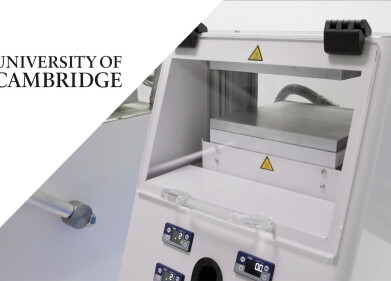Laboratory Products
University of St Andrews Selects Nta System For Exosomes Characterisation
Jul 15 2011
NanoSight reports that the School of Medicine at the University of St Andrews is using nanoparticle tracking analysis, NTA, to characterise exosome behaviour.
Dr Simon Powis and his colleagues at the University of St Andrews are working to understand how a set of molecules involved in the immune system’s defence against intracellular pathogens function. These molecules are called major histocompatibility complex (MHC) class I molecules, and they are expressed on almost every cell in the body. Their relevance to medicine is most commonly known because they are one of the key sets of genes that have to be closely matched when an organ transplant is made, otherwise the transplant can be rejected. It is now known that their precise role in the normal immune system is to bind small fragments of degraded viral proteins, which they display to T lymphocytes of the immune system. This allows the specific detection of ’foreign’ proteins, for example, from potential pathogens, and allows the immune system to specifically detect and kill infected cells, whilst leaving a neighbouring uninfected cell alone. In addition, there is one fascinating autoimmu ne disease closely associated with a particular type of MHC class I molecule. Over 90% of patients with a type of inflammatory arthritis called ankylosing spondylitis which affects the spine, expresses one specific type of MHC class I molecule called HLA-B27. The link between this arthritic condition and HLA-B27 has been known for almost 40 years, but the disease mechanism and how HLA-B27 is involved is yet to be understood.
Whilst the Powis group were studying MHC class I molecules expressed on exosomes, it was discovered that they can express a novel type of structure. The tail region of the MHC class I molecule, which sits inside the exosome, can frequently form a disulphide-bond linkage to another MHC class I molecule, thus bringing two molecules closely together in a dimeric structure. This normally does not happen on cells because the cytoplasm has a reducing environment, preventing disulfide bonds from forming. However, in exosomes the capacity to maintain a reducing environment seems to have been lost. The group is now studying whether cells of the immune system see these MHC class I dimers structures on exosomes and respond to them. Another key question is what peptides are found bound to MHC class I molecules on exosomes. The exosome production pathway is not the normal route for MHC class I molecules to get to the cell surface, so the possibility that different peptides are found in thi s subset of exosomal MHC class I molecules is a real possibility. To be able to study these exosomes from a variety of immune cells, it is necessary to detect their presence and size in cultures. This is the reason for the team choosing the NanoSight NTA approach with the LM10 system.
Digital Edition
Lab Asia 31.4 August 2024
August 2024
Chromatography Articles - HPLC gradient validation using non-invasive flowmeters Mass Spectrometry & Spectroscopy Articles - MS detection of Alzheimer’s blood-based biomarkers Labo...
View all digital editions
Events
Sep 11 2024 Bangkok, Thailand
Sep 11 2024 Bangkok, Thailand
Sep 11 2024 Singapore
Sep 18 2024 Lausanne, Switzerland
Sep 19 2024 Shanghai, China






.jpg)











